How to get tremendous amounts of carbon into the soil - an update of the coppice sumac system
Climate change didn't go away - even though it's out of the spotlight right now. We need carbon out of the air, and this is one of those things where we do not need to focus on one thing. We can do ALL of the things. www.drawdown.org is a good resource for some of the things we can do, but coppice/pollard systems are not on there.
Why do coppice, pollard (or ancient Japanese method called Daisugi) versus just planting trees? Firstly, we should do either, or, we should do both. Planting trees is something we obviously need to repair deforested lands, and nothing works there but planting new trees. However, that doesn't mean that where we currently have trees, we cannot leverage systems like coppice / pollard (and Daisugi) to sequester MORE carbon there also.
A coppice / pollard system is nothing more than cutting existing trees VERY AGGRESSIVELY and causing the tree to regrow from the stump. Not all trees can do this, as many will simply die once cut. However, some trees (such as sumac) have been shown to respond very vigorously to being cut down. This is typical of rhizome spreading trees who form giant mats of roots underground and send new runners up. These tend to respond very well when harvested for lumber, and regrow with tons (literally) of vegetative new growth. All this new growth is carbon being ripped out of the atmosphere and stored in wood.
Nitrogen fixers such as seabuckthorn can be used in the same way - and the harvesting itself will trigger root disassociation of the nitrogen clusters underground and will provide a slow release fertility boost (in situ) to the whole system surrounding it. I may transition to these, however the ease of using sumac (no thorns) and the ease at which it produces fantastic biochar is attractive. Speaking of biochar...
What we do next depends on our need. Wood for heating, woodchips, or my favourite - long term storage. Charcoal is one of the most stable forms of carbon that there is. It really only breaks down after being heated and combusted into ash, as in a campfire. However, if we remove the heat when it is still coal, then we can actually use is in filtration systems and as a nutrient sink/trap and microbiology habitat.
This is because charcoal made from wood has an extremely porous structure. (https://tse4.mm.bing.net/th?id=OIP.l_n4QXTOcF6d14h-jBv56wHaFj&pid=Api) This means it has tremendous surface area. Not only does it have a large surface area for binding nutrient (and housing soil microbiology), it also has the affinity to do so (being mostly carbon bonds).
Here is my video on making biochar: https://www.youtube.com/watch?v=0vkUevM7LzM
Once we make it, we can innoculate it with nutrient and life inside a compost pile. Think of this as pre-charging it, like a soil battery. Then we amend it into the garden by simply mulching with it, or adding it to compost we put in potting holes as we plant new trees and plants. Inside the soil, it will store and hold water like a sponge (due to Van Der Walls forces) and also store and trap nutrient runoff and hold it. Most importantly, it holds it in a bioavailable way for plant roots to access. The plant fine hair roots will penetrate into the biochar crevices and have access to all the nutrient they could ever want.
Coppice and pollard systems are great to establish if you want a constant source of free fuel for heating in an off-grid scenario (or simply a wood burning stove heating), or if you want a constant source of wood for woodchips and mulch, or if you want a constant source of biological material for clean biochar generation to act as a soil amendment to mimic the incredibly fertile soils of the Terra Preta Amazonian soils.
_____________________
Doing shopping on Amazon? If you start your shopping by clicking on my Amazon affiliate link, it costs you nothing (not even a penny) but I receive a small commission of anything you buy. The link here takes you to my website blog on my favorite permaculture books. However, if you click on any link there as your starting point, then go buy ANYTHING, it helps support me.
You can always support the channel and get some cool shirts, mugs, bags, etc here: https://CanadianPermacultureLegacy.com/merch
Or help me plant trees directly through Patreon by becoming a Patron:
https://www.patreon.com/user?u=15912954
For great recipes, cooking, storing, canning, and growing tips, check out Gardening in the North:
https://www.youtube.com/channel/UCHk8xZzWYjZv0pjfr9iOjxw
Music credits:
Closer by Jay Someday | https://soundcloud.com/jaysomeday
Music promoted by https://www.free-stock-music.com
Creative Commons Attribution 3.0 Unported License
https://creativecommons.org/licenses/by/3.0/deed.en_US
-
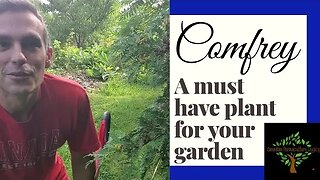 17:38
17:38
Permaculture
3 years ago $0.05 earnedSoil building with Dynamic Nutrient Accumulators - Comfrey
951 -
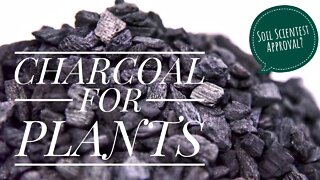 29:00
29:00
GardeninginCanada
3 years ago $0.01 earnedUSING CHARCOAL IN POTTING SOIL? BENEFITS & DOWNFALLS OF CHARCOAL & PLANTS | Gardening in Canada 🎍
441 -
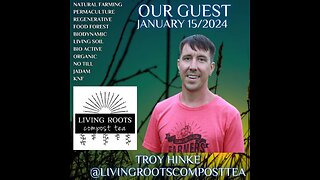 2:01:58
2:01:58
itsallaboutthebiology
5 months agoThe Soil Matters Troy Hinke @livingrootscomposttea
37 -
 2:01:58
2:01:58
itsallaboutthebiology
5 months agoThe Soil Matters Troy Hinke @livingrootscomposttea
33 -
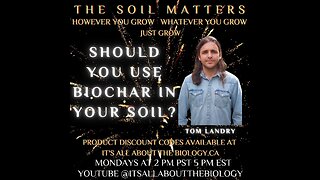 3:36
3:36
itsallaboutthebiology
5 months agoShould You Use Biochar In Your Soil?
41 -
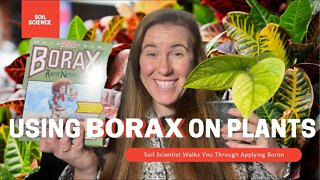 17:15
17:15
GardeninginCanada
2 years ago $0.40 earnedHow To Use Borax On Plants. Borax Can Be Used On Houseplants & The Garden. Soil Scientist Explains
1.36K1 -
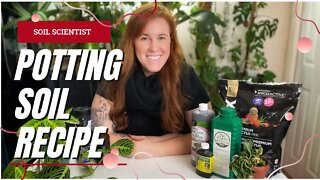 26:54
26:54
GardeninginCanada
2 years agoEXCITING ANNOUNCEMENT! Plus My Personal Potting Soil Recipe For Houseplants. I Like A "Heavy" Soil
761 -
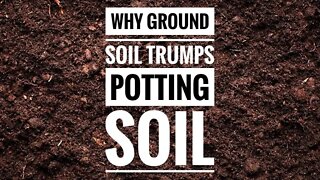 7:08
7:08
GardeninginCanada
3 years agoWHY GROUND SOIL IS BETTER THAN POTTING SOIL. COLLAB WITH FRASER VALLEY ROSE FARM. 🪴👩🔬🇨🇦
6 -
 6:47
6:47
Thinglish Lifestyle
1 year ago $0.07 earned13 FREE and Organic Nitrogen Sources for Your Garden
257 -
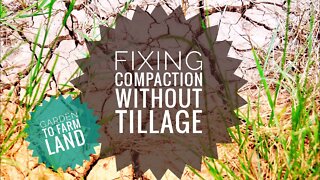 7:27
7:27
GardeninginCanada
3 years agoNO TILL SOLUTION TO SOIL COMPACTION. COVER CROPS FOR COMPACTION | Gardening in Canada
53